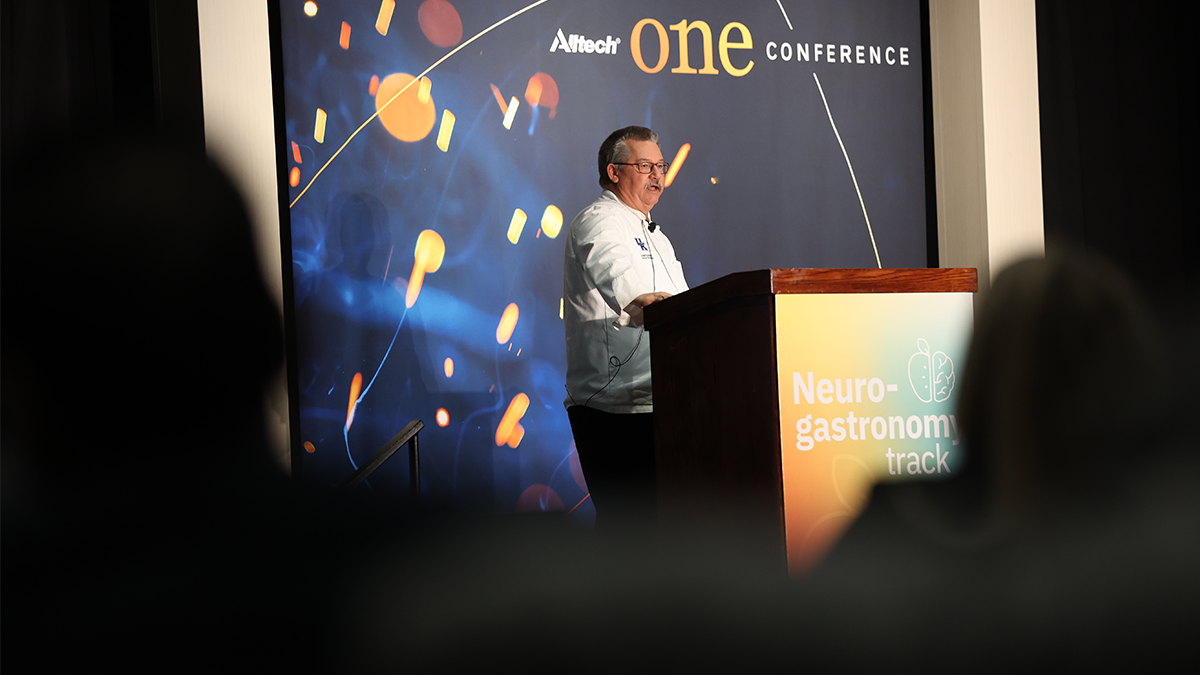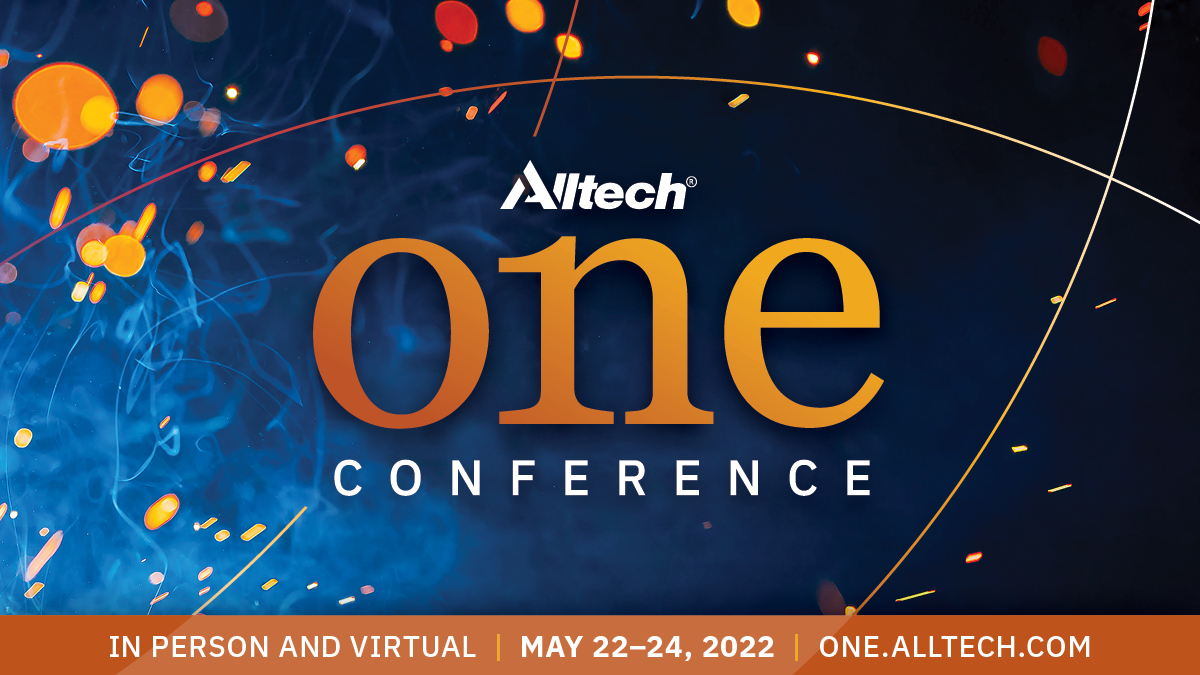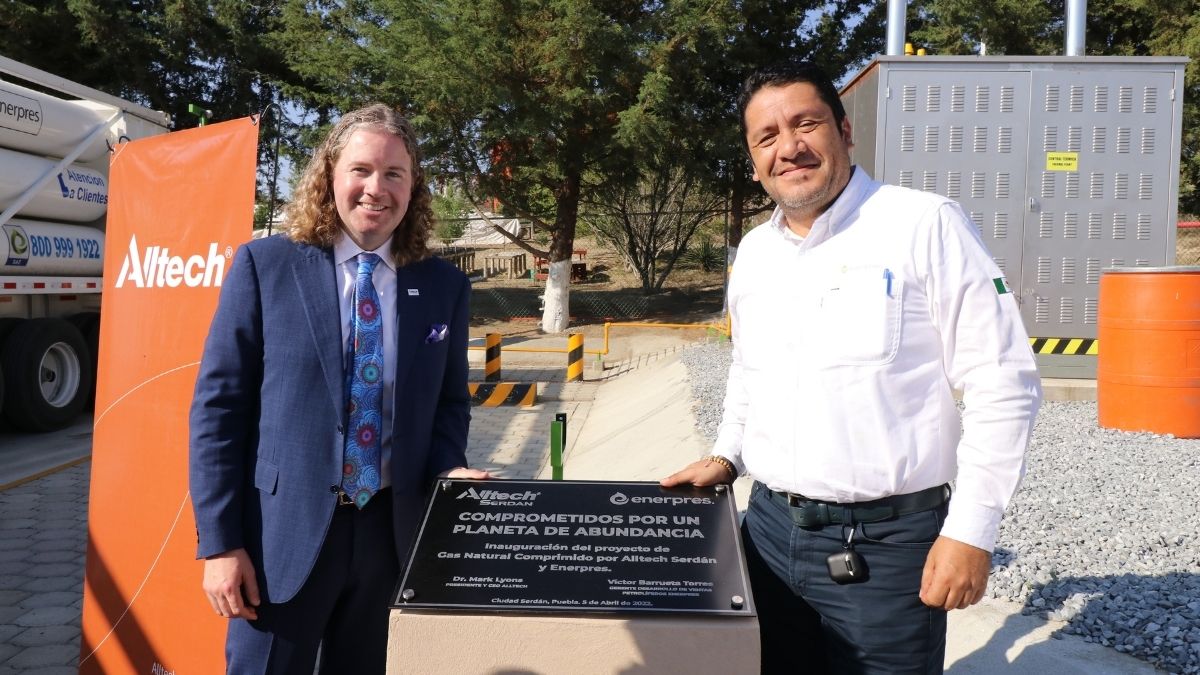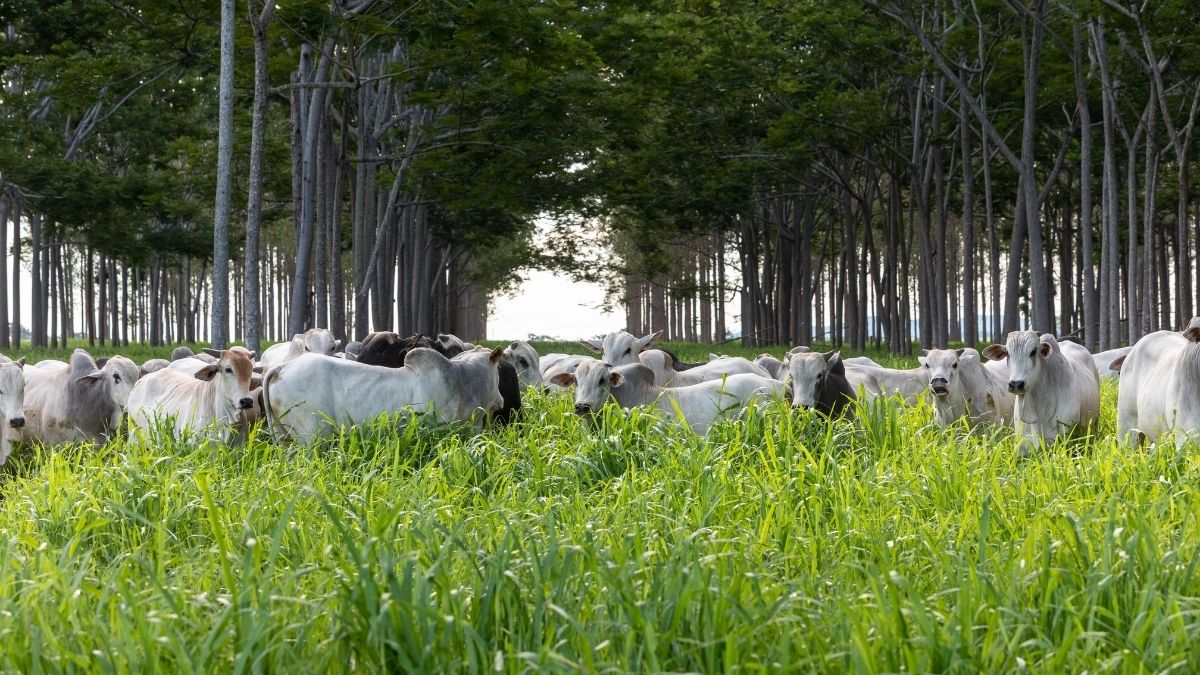Can different generations get along?
Five generations comprise today’s workforce — how can they all get along? Colene Elridge, a.k.a. "Coach Colene," CEO of Be More Consulting, joins the Ag Future podcast to discuss why leaders need to exercise empathy, inclusion and listening to grow their businesses and foster future leaders.
The following is an edited transcript of the Ag Future podcast episode with Yasir Khokhar hosted by Tom Martin. Click below to hear the full audio or listen to the episode on Apple Podcasts, Spotify or Google Podcasts.
Tom: Welcome to Ag Future, presented by Alltech. Join us from the 2022 Alltech ONE Conference as we explore opportunities within agri-food, business and beyond.
In many industries, five generations now comprise the workforce: traditionalists, baby boomers, Generation X, millennials, Generation Y and Generation Z. Most traditionalists have retired. Baby boomers are following suit, (or are) at least trying to figure out how to retire. Gen Xers are in high demand for their unique abilities to bridge generations. Millennials are approaching 40. Gen Z is entering the workforce. Can they all get along?
I'm Tom Martin. In this episode of Ag Future, we put the question to Colene Elridge, CEO of Be More Consulting and vice chair of the Board of Regents at Transylvania University. Thanks for joining us, Colene.
Colene: Thank you so much for having me.
Tom: Let's begin with that burning question: Can these generations — given the vast differences in their lived experiences — can they all get along?
Colene: They can. It's so interesting because I think, most of the time, the conflict isn't rooted in the generational difference; it's rooted in the different expectations that we have. That can happen with people of the same generation or with people of a different generation. I think part of the key is just that awareness and that empathy and understanding that we can bring into a workplace that we all bring different strengths and weaknesses and skill sets into an organization.
Tom: When you have the combination of skill sets and so forth under one roof, somebody has to lead, has to pull it together, make it coalesce. Can that be taught? Are some people born leaders?
Colene: I think some people are natural leaders, but I do think that there are skill sets that have to be learned in order to be successful at being a leader. I think all of us are leaders in some way. Some of us just do it a little bit better than others based off of our own experiences and our ability to learn and resources that we've had (access to). Some people are definitely born leaders. I think you can see kids on the playground and you can pick them out, right? But some people really do have to learn and hone and polish those skill sets to be great leaders.
Tom: What are the non-negotiables of being a good leader?
Colene: Communication skills, flexibility in how I communicate — I think that's probably one of the top things that I hear from organizations or from exit interviews of people from organizations: “My boss didn't listen to me.” So not just “How do I communicate out?” but “How do I receive communication?” That communication piece is key — building trust as a leader. I don't think we spend enough time actively and intentionally trying to build trust between leadership and employees. We trust the people that we work the closest with. If I'm two seats up on the hierarchy, it's really hard for me to trust you, because I don't know you. Building that trust, intentionally building that trust, I think, is a non-negotiable.
Then, having some flexibility. Oftentimes, I talk about communication and I talk about policies as either it's like you're running into a wall or you're running into cotton. How do I have that flexibility that — we need the structure here, but I also understand that circumstances happen and people are people. I can't just blanket a policy on every person equally.
Tom: You have said that established leaders who want to grow their businesses and foster their successors need to unlearn and relearn their management practices to better exercise empathy, inclusion and listening — the things you're talking about. That sounds like a major change. That sounds like the “old dog, new trick,” that conundrum. What do leaders need to start and stop doing in order to find common ground across generations and to maximize returns from that?
Colene: I have to share a funny story. I was doing a training for one-star generals that were about to be promoted to two-star generals. We're talking about generational differences in the workplace. I said, “The way that you've always done bootcamp probably will not have the same outcome now as it had 30 years ago. You need to be thinking about, ‘Where can we make some changes to bootcamp?’” What kind of reception do you think I got from that? They were like, “No, no, we've always done it this way. We've never let people have phones.” Well, right, because in 1970, people didn't have cell phones. How do we look at the policies that we have in place and ask ourselves, “Is this still relevant? Is this still necessary?”
I think some of the things that leaders have to unlearn is this thought process that just because it's there that it should be there. Just because we've done it this way that we should continue to do it this way. Recognizing that, “I, maybe, have built the ship, but now it's time for me to update the ship.” That's, I think, one of the biggest things that we have to be willing to unlearn, is the thought process of “I've always done it this way.”
Tom: A great leader that I once worked under said that the key to everything is flexibility. But again, being flexible, making yourself flexible, opens you to the possibility that things are not going to go your way. It’s very important to learn that skill of flexibility, isn’t it? How important to the success of a business are effective communication skills? You mentioned that among leaders.
Colene: Yeah. It will make or break an organization. Lack of effective communication mixed with a lack of trust, which — those two things go hand in hand (and) can really make or break an organization. I often joke about communication. One — this part is not a joke — but if information can be shared, it should be shared. I think that that’s so important, because when leaders choose to not share information, employees, we're human, we go to worst-case scenario. No one ever comes to you and says, “Tom, I need to talk to you,” and you think, “They're just going to tell me how great I am.” You think, “What did I do wrong? What do I need to fix?”
I think, when we look at that on a massive scale of an organization, each of us are left to our own devices to make up worst-case scenarios. Then I'm going to go to my friend, and we're going to come up with an even worse-case scenario together. I think, when we think about how we communicate in organizations, there's this thought of “I should not communicate a message until it's polished, until it's shiny, until I know 100% that this is the outcome.” People want to be brought along on the journey. You can get better buy-in if they've seen the process versus (if) you just give them the end result. Transparent communication and progressive communication, I think, can do tremendous good in an organization.
Tom: Where that gets you is probably the ultimate goal, and that's trust. What are some hallmarks, the kinds of communication skills between employers and employees, that can make a real positive difference in a company's performance?
Colene: Checking for understanding. It goes back to that listening skill. I think there is a thought with leaders sometimes: “I'm going to tell you what I need you to do, and then I’m going to send you off to do it. I’m not going to give you an opportunity to ask questions. I’m not going to give you an opportunity for feedback.” Then, you present me with this final result, and it's nothing at all that I wanted. Now I'm frustrated as a leader. Now you're frustrated as an employee, because you've spent all this time, energy and resources. How could we have avoided that?
Number one would have been transparent communication along the way. Before I sent you off, I could have checked in. “Do you have any questions? Is there anything that you don't understand? Anything that you need clarity on?” (I could) use that as an opportunity to get the feedback. Maybe you weren't as clear as what you thought you were. I think we're just in such a rush to get things done that we forget that getting things done the right way matters as well.
Tom: Colene, the question for the times — I think a lot of people would like to hear your thoughts on this, (and) that is: How do we lead remotely, digitally? Is it even possible?
Colene: It is. I think it requires a lot of effort and way more intention than what it would be in a traditional workplace. I think, when we look at what good remote leaders do is they do have that personal connection with their employees as well. They're making the time to ask questions about how their family is doing. They're checking in with them as a person. “How are you doing?” Seeing me as a person, not just the machine. I think that's really one of the keys when it comes to remote leadership: It's still building those relationships and those connections.
Tom: Back to communications for just a second, and that is gaining those skills. How often should people be trained on communication skills in order for them to become effective and impactful?
Colene: Communication skills are a practice, much like people go to the gym. You don't get fit by just working out one time. You have to actively practice it. I think the difference with communication skills is people think, “Well, I talk all the time. I'm good at communicating.” There's a difference between talking and effectively communicating. You have to practice that. You have to be open to getting feedback. Oftentimes, you have to be willing to ask for that feedback on my communication skills. “Hey, was I clear in that meeting? Is there anything that you feel like I could have done better to have gotten my point across more succinctly?” What are the skills that you really want to work on? Then, you have to be able to create measurable goals towards that. That way, you can see the progress that you're making.
Tom: Sometimes, pride and ego can get in the way.
Colene: One hundred percent. Yeah. People like themselves a lot. When I like myself, sometimes it's hard to hear that feedback.
Tom: It can be. Well, what is the one thing that everybody can be better at when working in a multigenerational team, which just gets us back to where we began with the conversation?
Colene: The one thing — can I give you two instead?
Tom: Absolutely. Three or four, if you’ve got them.
Colene: The two things — the two things I would say is, one, to pause, to pause and think before you speak. Think before you interact. I think that applies not just across generational differences but any differences that any of us bring to a workplace. Pause and try to not necessarily put yourself in the other person's shoes, but wonder what might be causing their reaction, how they said something, before you react. That pause is a game-changer for a lot of people.
The second thing is to recognize that generational difference is just one piece of the differences that we bring into work. I love talking about generational differences, but it's probably not even the most exciting piece of who you are and who you bring to work. That one dimension does mean something, but that one little attribute of diversity is one piece of who you are as a person. Get to know people and not just the perceptions of the generational difference that they might bring into the workplace.
Tom: Sometimes I think we forget that, in thinking about the pause — that even that, that moment of silence while you're sitting there processing, that's communication. It can be interpreted in a lot of ways.
Colene: Yes. There is no need to react. There is no need to respond as quickly as what everyone thinks they need to. The pause is a gift.
Tom: Given the experiences that you’ve had in training and working with people in these roles, what's your takeaway today about the state of leadership? Are we doing it well? How are we progressing as a community of leaders?
Colene: I think it's so interesting, because COVID hit, and I think what we saw was a humanization of leadership. That was very appreciated on the employee side. They got to see their leaders in their kitchen with their cats running up (beside them). They got to see them as people and not just the person in the big office that's making the decision. I think what is not helping us right now as leaders is this rush to try to revert back to February 2020. Those leaders that are trying to do that, trying to make things exactly what it was like pre-COVID, I think, are not going to be successful, because people just have different expectations now of, “What does it even mean to be a leader?”
Tom: Would you say that genie's out of the bottle?
Colene: Absolutely. I often say, it's like once you squeeze the toothpaste out; you can't get it back in. A lot of leaders are now walking around with messy hands because they're trying to get the toothpaste back in the tube instead of just saying, “Okay, now what? How can I continue along this path?” I know it made so many of them uncomfortable to have that vulnerability and that transparency, but that is now what people want. It's what people wanted beforehand. I think people just got to see that it could be a reality, and now that's the expectation.
Tom: Well, it's not every day that the whole world goes through a paradigm shift at once.
Colene: Absolutely.
Tom: That's what we've been through. It's pretty incredible.
Colene: That one thing, I think, has exponentially increased the speed of change at work.
Tom: Colene Elridge, CEO of Be More Consulting. Thank you, Colene.
Colene: Thank you so much.
Tom: For the Alltech Ag Future podcast series, I'm Tom Martin. Thank you for joining us. Be sure to subscribe to Ag Future wherever you listen to podcasts.
- Read more about Can different generations get along?
- Log in to post comments
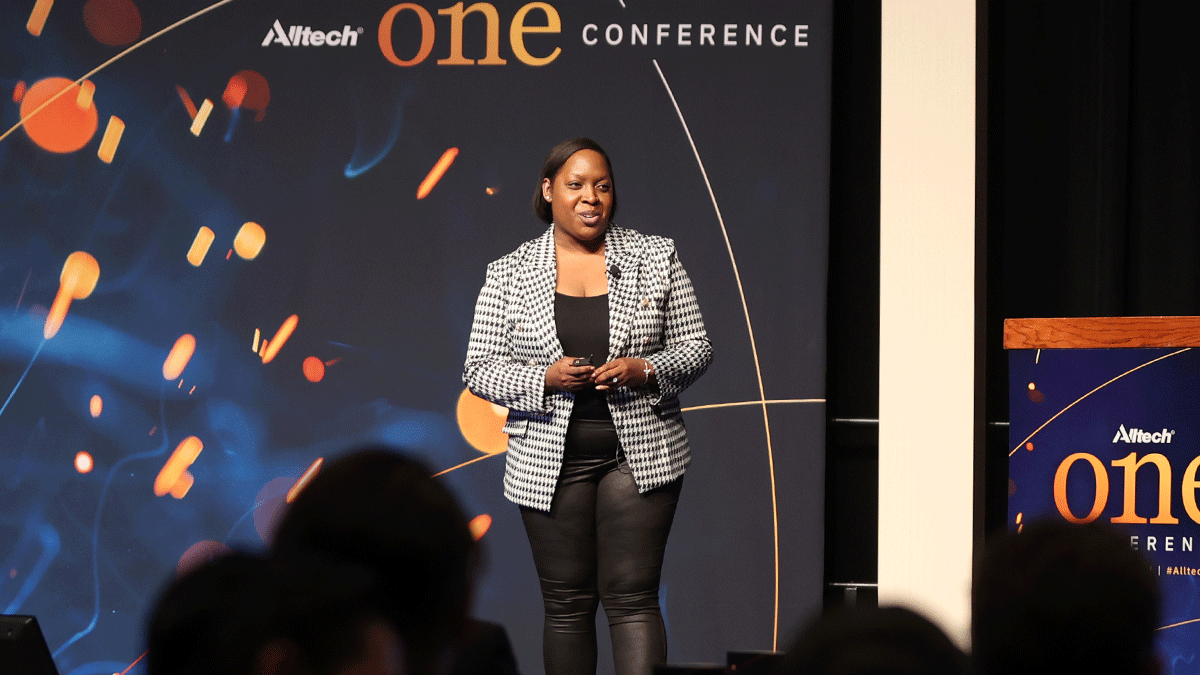
Colene Elridge's decade-plus of HR experience has led to her being known by some as “The Fixer,” and she feels called to help organizations and leaders create better workplaces, intentional leaders and aligned results.
















